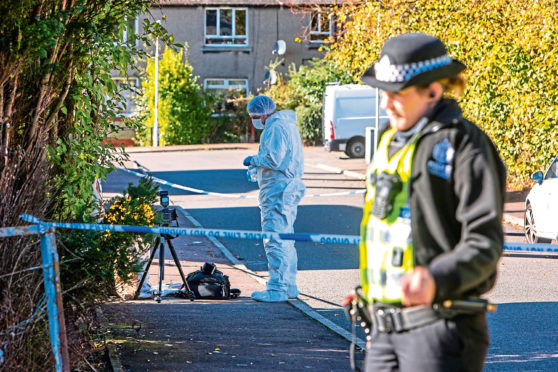Images of the head injuries suffered by a victim have been shown to shocked jurors in a Fife murder trial.
Forensic pathologist Dr Ian Wilkinson described the devastating damage caused by multiple blows which shattered Claire Turnbull’s skull and destroyed underlying brain tissue.
Before the graphic photographs were issued, Judge Lady Scott warned the jury: “This is quite difficult to look at.”
She ruled the photographs should not be shown to the public benches at the High Court in Livingston, where friends and relatives of the dead woman were sitting.
Claire’s mother Heather had already walked out of the courtroom in distress as Dr Wilkinson started describing the findings in his post-mortem examination report.
Aaron Donald, 28, and Laura McMurdo, 30, from Blairhall, are accused of murdering Claire at a flat in Blairhall, attempting to defeat the ends of justice by hiding a hammer believed to be the murder weapon, and giving police false information.
They deny the charges and Donald has lodged special defences claiming he could not be held criminally responsible because he was suffering from a mental disorder and diminished responsibility at the time of the killing.
The jury heard Donald telling police under caution that he had “lost it” when he saw Claire making sexual advances to his girlfriend McMurdo. He described how he grabbed her by the throat and punched her twice on the face before grabbing a claw hammer and hitting her on the head a number of times.
The forensic pathologist told the jury he had found numerous bruises on Claire’s neck and face, particularly around her left eye and mouth.
Dr Wilkinson said, Claire had seven severe head injuries which had caused multiple fracturing and her skull was deformed, indicating that considerable force had been used.
He concluded the 36-year-old single mum had died as result of “blunt force trauma of the head”.
Examination of cellular material showed limited changes, indicating that Claire’s survival time after the injuries had been very short.
He said he found no signs of defensive injuries to suggest that she might have tried to fight off her attacker.
Dr Wilkinson summarised the cause of death as “blunt force trauma of the head as result of multiple impacts between head and a blunt object, lacerations of the scalp, extensive fracturing of the skull and traumatic damage of the brain”.
Shown a hammer recovered from the accused, he was asked if any of the injuries were consistent with the hammer being used as a weapon.
He replied: “The nature of the depressed fractures and the curved edges of some of the fractures and U-shaped lacerations could be consistent with impact of the rounded head of the hammer or a similar object.”
The jury was earlier played a video of McMurdo being interviewed by police. In it she admitted meeting Claire and her boyfriend outside Codeys bar in Dunfermline on October 5, the day she died.
But she claimed they had left and she had not seen them again that day. The trial, before Lady Scott, continues.
